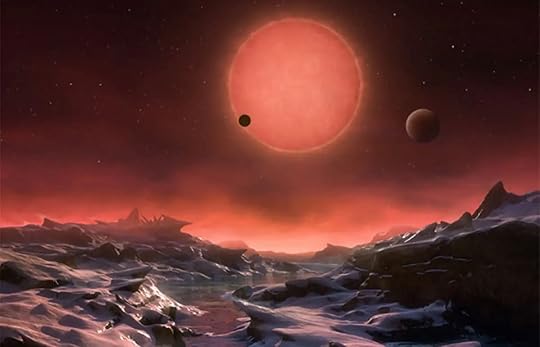Alien Earths: The New Science of Planet Hunting in the Cosmos by Lisa Kaltenegger
My rating: 4 of 5 stars
“So yes, Luke Skywalker could have enjoyed a warm day under two suns—but I always wondered where his second shadow was.”
Looking for potentially habitable planets has different meanings to different people. It can be a way to satisfy intellectual curiosity, or desire to find other life so that we know we are not alone, or a way to spread humanity across the universe (whether the universe needs it or not remains quite debatable), or a way for us to have a Plan B in case our wonderful and perfectly suited for life as we know it Plan A of Planet Earth becomes less human life-friendly. Whatever is the reason, the search for potentially habitable exoplanets quickly went from the realm of science fiction to the realm of science.
And the potential for habitable planets is quite impressive. They seem to be pretty much everywhere, apparently. And Lisa Kaltenegger is beyond excited about them.
“We have no photo of the two hundred billion stars in our Milky Way—and we won’t have one for a long while. To fit the entire Milky Way in a photo, a spacecraft must fly far away from Earth, and far above the plane of our spiral galaxy. And no spacecraft has even made it to the next star over yet. The Earth is like a piece of pepperoni on a pizza trying to imagine the whole pizza’s shape. One of the main differences between us and the questioning pepperoni is that we have figured out what our galaxy looks like.”
It’s a very accessible read that can serve as an easy primer on a fascinating subject. Kaltenegger – despite the serious title of the director of Cornell University’s Carl Sagan Institute – keeps it simple and clear, with the end result of it being interesting and comprehensible to pretty much anyone with zero science background. Not to mention extra nerd points for referencing a few science fiction books and films (I like Andy Weir too, Lisa!). It’s a great book to get people interested in the topic without getting bogged down too much in hard science behind it.
3.5 stars that I’m happy to round up.
——————
Thanks to NetGalley and St. Martin’s Press for providing me with a digital ARC in exchange for an honest review.


